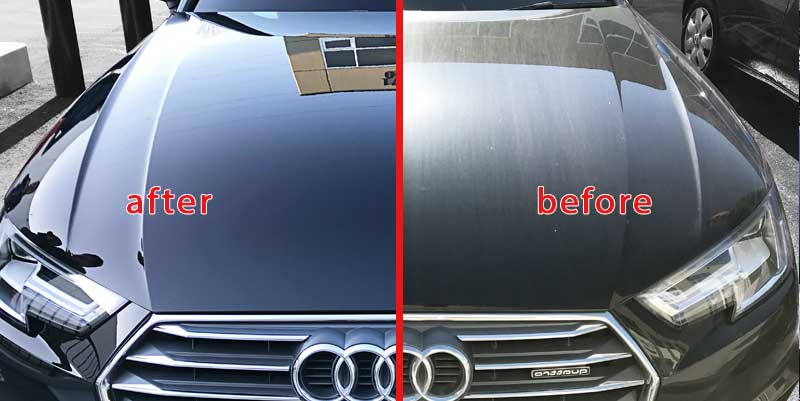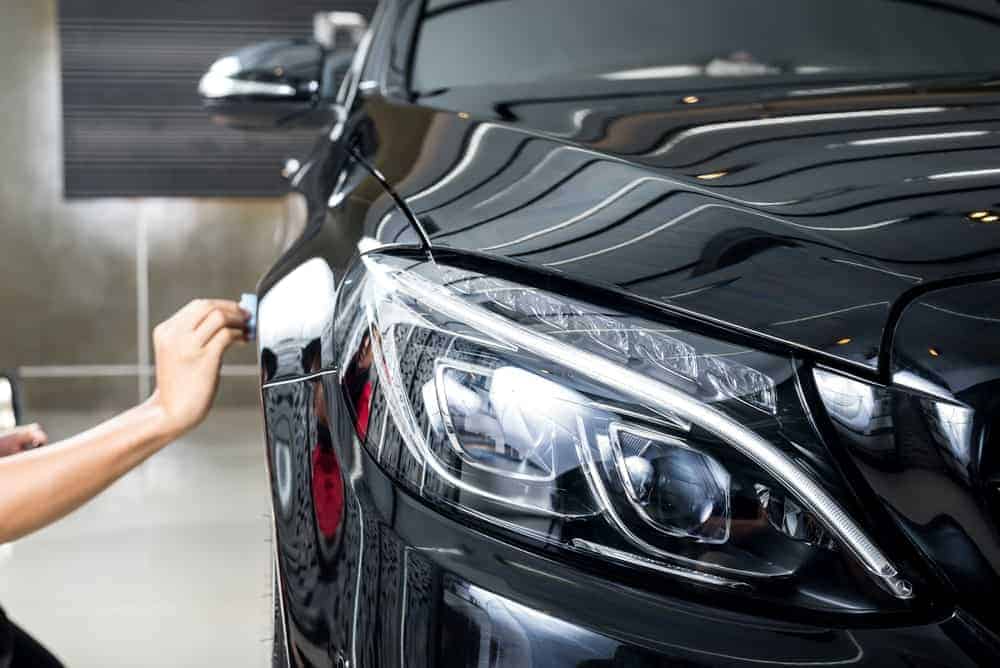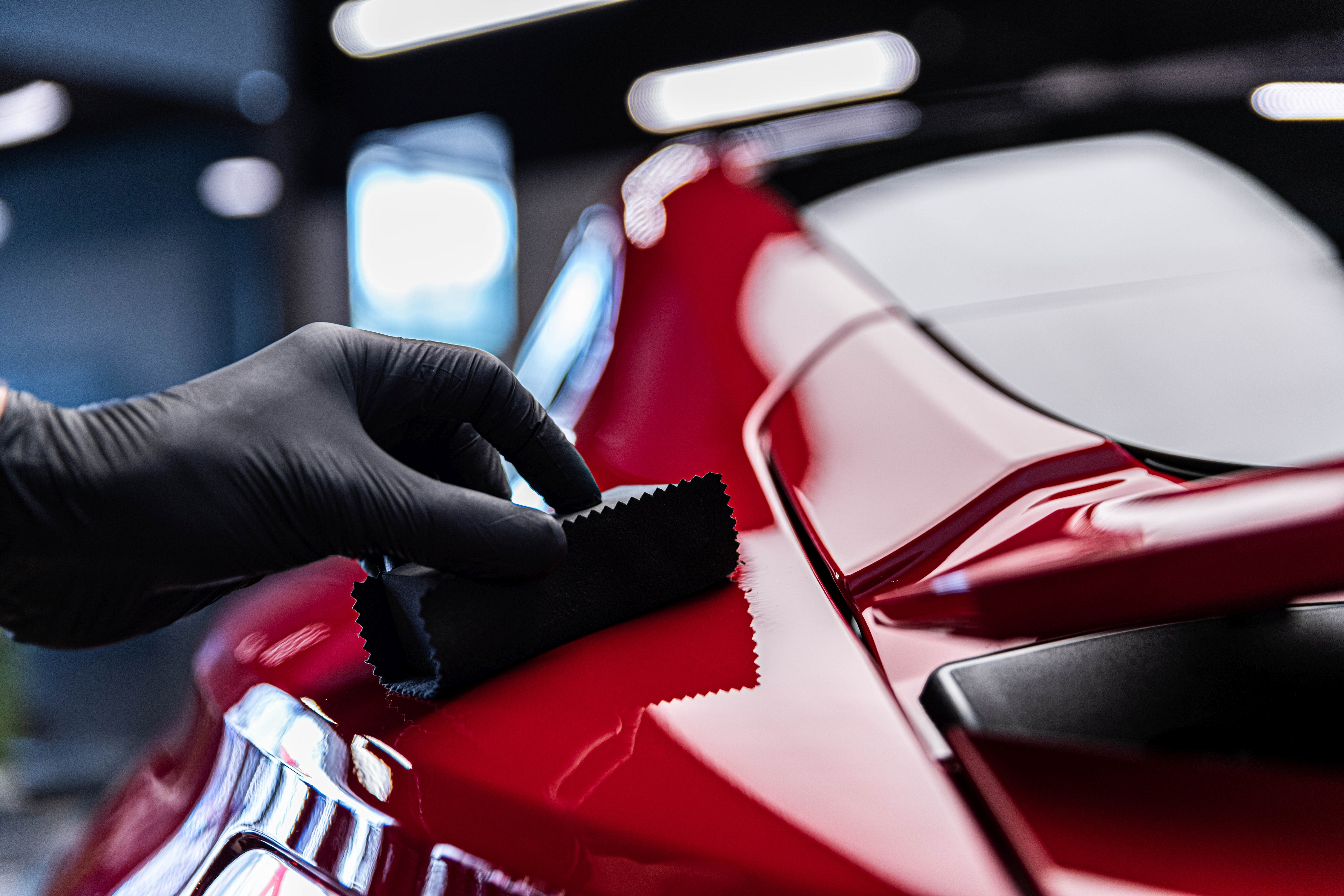Why Ceramic Coating Is Essential for Maintaining Your Car’s Paint
Wiki Article
Ceramic Coating vs. Typical Wax: Which Offers Better Long-Term Protection?
The dispute in between ceramic finishings and typical wax for vehicle protection has amassed significant interest among automobile enthusiasts and experts alike. While both satisfy of protecting paint, their differences in toughness, application, and lasting upkeep prices might influence a consumer's choice. Ceramic finishings boast exceptional longevity and resistance to environmental aspects, yet the complexity of their application questions concerning ease of access and usefulness. As we explore these contrasting alternatives, it comes to be important to consider not only the immediate advantages yet additionally the implications for lorry treatment in time.Overview of Ceramic Coating
Ceramic layer has acquired substantial appeal amongst auto enthusiasts and detailers alike due to its innovative protective top qualities. This innovative technology is made to create a sturdy, hydrophobic guard over a vehicle's paint surface, substantially enhancing its resistance to ecological contaminants such as dust, UV rays, and chemical discolorations. Unlike conventional wax, which provides a temporary layer of protection, ceramic finishings bond at a molecular level with the paint, offering lasting sturdiness-- usually extending beyond 2 years with proper maintenance.The application procedure entails precise prep work of the vehicle's surface, including cleansing and polishing to make certain optimal adhesion. Once applied, the layer cures to form a robust layer that not just includes deepness and gloss to the paint but likewise simplifies upkeep. With its hydrophobic properties, ceramic covering permits water and dust to move off more quickly, lowering the frequency of cleans and minimizing the risk of swirl marks.
Furthermore, ceramic layers are offered in various solutions, enabling users to select items tailored to their details demands and choices. On the whole, ceramic coating stands for a considerable innovation in paint defense modern technology, delivering remarkable performance compared to standard alternatives.
Overview of Typical Wax
Commonly considered as a staple in vehicle treatment, wax functions as a popular selection for those looking for a straightforward method to boost and secure their lorry's paint - ceramic coating. Automotive wax generally comprises all-natural ingredients, such as carnauba, or artificial substances, designed to develop a safety layer externally of the paint. This layer not only improves the vehicle's gloss and shine but also provides a barrier against ecological pollutantsThe application of wax is typically user-friendly, making it accessible for both experts and DIY fanatics. When used, wax calls for a curing period, after which it hardens to develop a safety shell.
Nonetheless, while wax is efficient for improving the aesthetic allure of a car, it is very important to keep in mind that the protection it offers might necessitate a lot more frequent reapplication contrasted to different products, such as ceramic finishes. Overall, standard wax continues to be a popular option for those focusing on convenience of use and immediate aesthetic enhancement.
Resilience and Longevity Contrast
While both ceramic coverings and typical wax offer protective advantages for vehicle paint, their durability and long life vary substantially. Traditional wax, typically made from all-natural carnauba or artificial polymers, normally offers a safety layer that lasts roughly three to 6 months. This relatively short life expectancy requires routine reapplication to keep optimal defense.In comparison, ceramic coverings are engineered from advanced nanotechnology, developing a covalent bond with the paint surface. This causes a durable, hydrophobic layer that can withstand for 2 to 5 years, relying on the item and environmental conditions. The exceptional resilience of ceramic finishes is associated to great site their chemical structure, which offers boosted resistance to scratches, UV rays, and oxidation.

Protection Versus Ecological Variables
Protecting a lorry's paint from ecological variables is crucial for preserving its appearance and worth in time. Autos are continuously subjected to a range of components, consisting of UV rays, bird droppings, tree sap, acid rain, and roadway gunk, all of which can compromise the integrity of the paintwork.Ceramic coatings offer a durable protection against these ecological aggressors. Unlike conventional wax, which can break down quickly under UV direct exposure, ceramic coatings create a long lasting, hydrophobic layer that resists the hazardous effects of sunlight and toxic wastes. This sophisticated modern technology develops a chemical bond with the car's surface area, using exceptional protection that lasts for several years, even in harsh conditions.
Standard wax, while less complicated to apply, normally calls for frequent reapplication and offers restricted resistance to contaminants and UV rays. Over time, it can damage down, leaving the paint vulnerable to scrapes and oxidation. On the other hand, ceramic coatings preserve their protective qualities longer, considerably reducing the danger of paint damage and guaranteeing that the lorry maintains its visual charm. Therefore, ceramic coatings are progressively acknowledged as the remarkable option for long-term security versus environmental variables.
Application and Upkeep Differences
The methods of application and subsequent maintenance for ceramic coverings and typical wax differ substantially, influencing the total customer experience and performance of each item. Ceramic finishes need a more detailed application process, normally including surface area prep more work that includes cleaning, decontaminating, and brightening the lorry. Once the surface is ready, the ceramic finishing is applied in a regulated atmosphere, commonly needing expert proficiency to make sure appropriate treating and bonding to the paint.

While both products improve automobile look, the longer-lasting security provided by ceramic coatings may warrant their preliminary financial investment, regardless of the more requiring application process. On the other hand, typical wax continues to be a popular choice for those seeking a less complex, albeit temporary, service.

Conclusion
In final thought, ceramic coatings demonstrate considerable benefits over traditional wax in terms of resilience and environmental defense. With a life expectancy prolonging two to 5 years and remarkable resistance to UV rays, dust, and chemical stains, ceramic coverings use a more efficient solution for long-term automobile maintenance. The application procedure might require professional know-how, the resulting cost savings and decreased frequency of reapplication underscore the value of ceramic coverings for those seeking optimum lorry defense.The discussion in between ceramic layers and standard wax for lorry protection has actually amassed substantial attention amongst automotive lovers and professionals alike. Unlike traditional wax, which supplies a short-term layer of protection, ceramic finishings bond at a molecular degree with the paint, offering long-lasting durability-- usually extending past 2 years with proper upkeep.
While both ceramic coverings and conventional wax deal protective benefits for auto paint, their sturdiness and long life vary dramatically. For car enthusiasts looking for long-term protection, ceramic coatings present an engaging benefit over standard wax products.
In verdict, ceramic layers demonstrate substantial advantages over standard wax in terms of durability and environmental security.
Report this wiki page